US: Hurricane Ian – Maps and images showing destruction
By The Visual Journalism Team
BBC News
Share
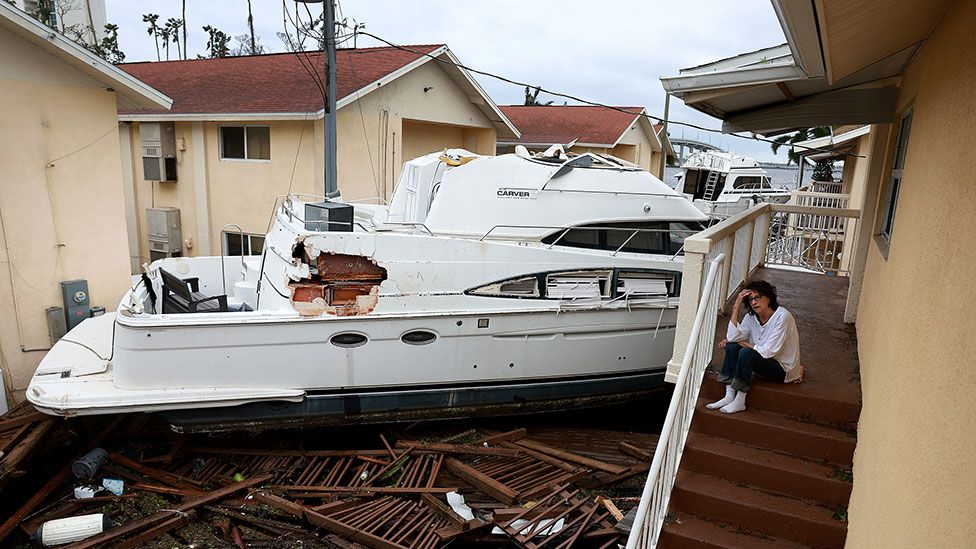

Hurricane Ian – one of the most powerful storms to hit the United States in recent years – has caused widespread disruption after barrelling across the Caribbean into Florida.
Local reports say thousands of people are awaiting rescue and there are fears of fatalities.
Ian has now been downgraded to a tropical storm but people are being warned to continue to take shelter as strong winds and heavy rains move across the state. The storm is then expected regain hurricane strength as it crosses the sea to South Carolina.
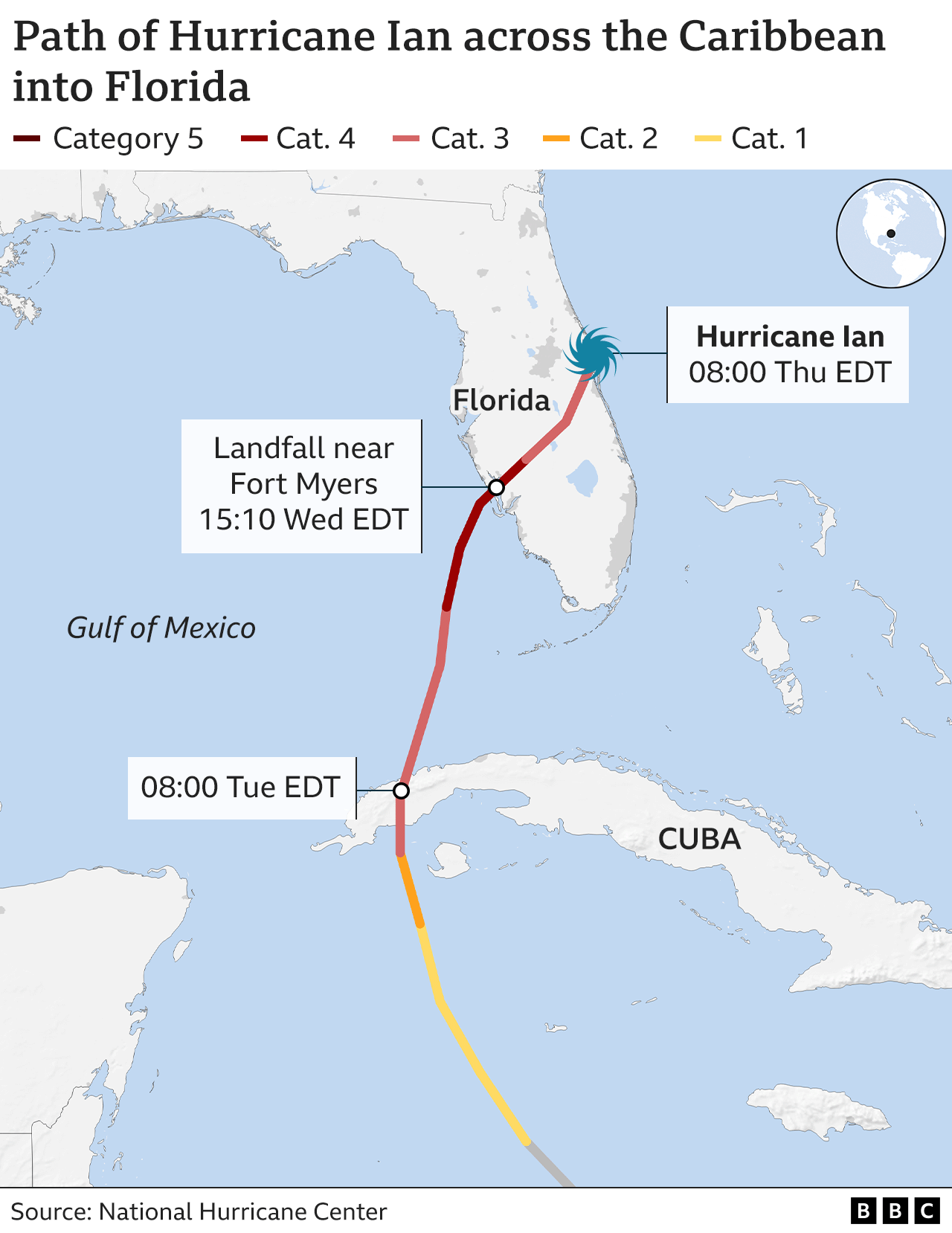

The storm built to a Category 4 hurricane as it crossed the Gulf of Mexico, bringing wind speeds of up to 241km/h (150mph) and causing storm surges, or rising sea levels, which flooded coastal communities and left thousands of people without power.
The National Hurricane Center (NHC) has warned of further life-threatening surges as the storm turns towards the north-east coast.


In Fort Myers, near where the storm made landfall, streets have been flooded by a surge of sea water driven by the storm.
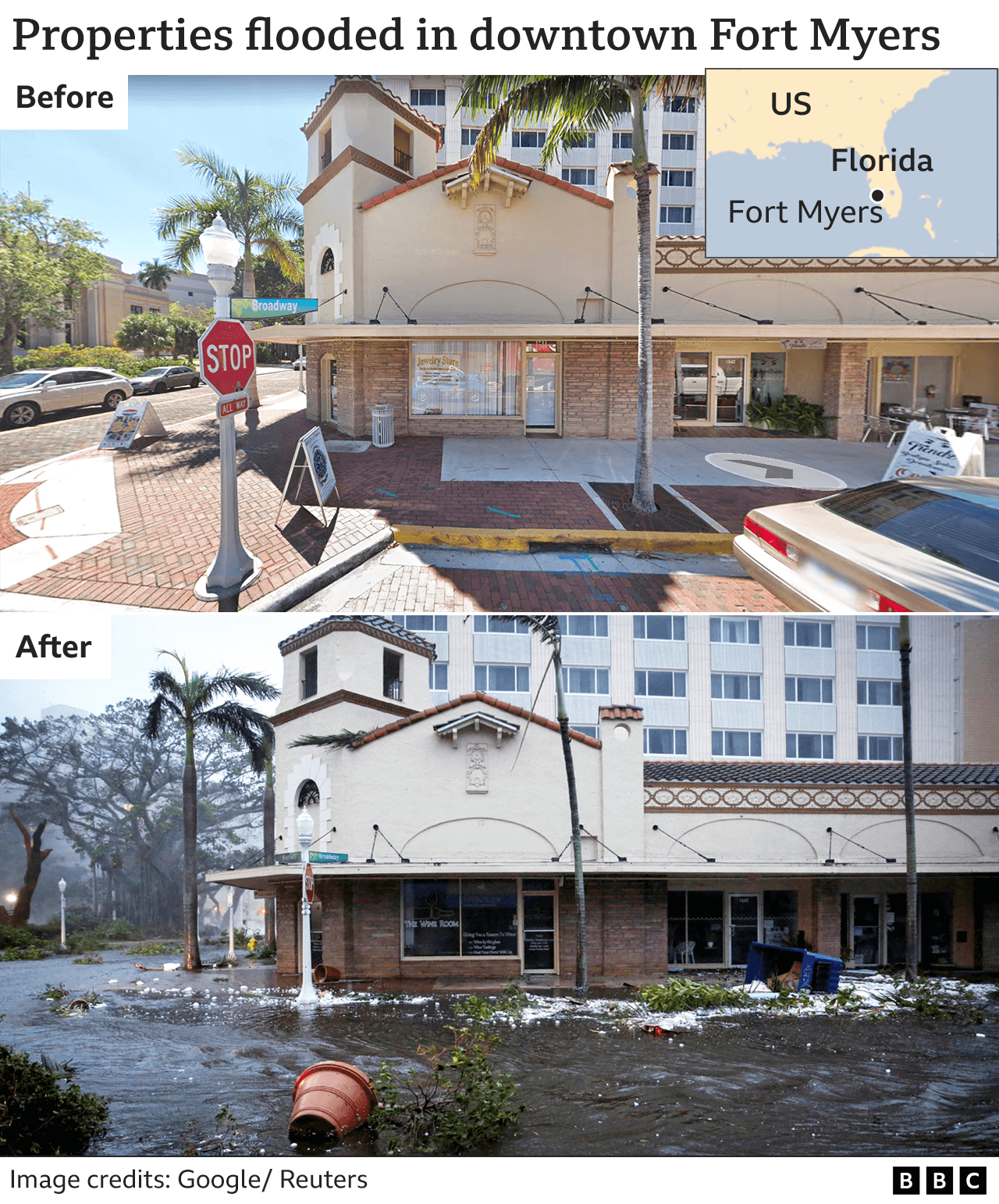

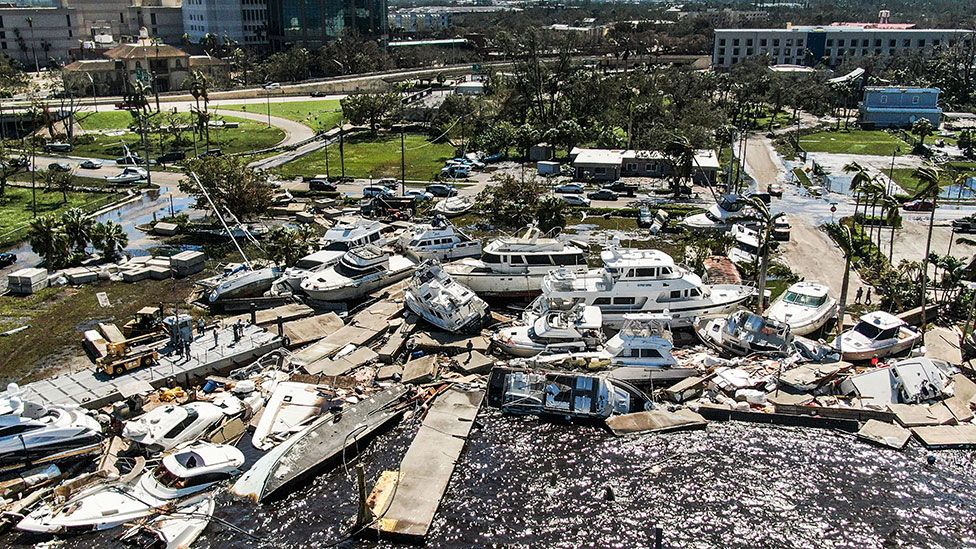

Dan Allers, a councillor in Fort Myers Beach, said the surge of water was about 12-14 feet (3.7-4.3m).
“To say it’s devastation would be a severe understatement, just watching people’s belongings and homes and things float by – it was a very tough scene to witness,” he told the BBC.
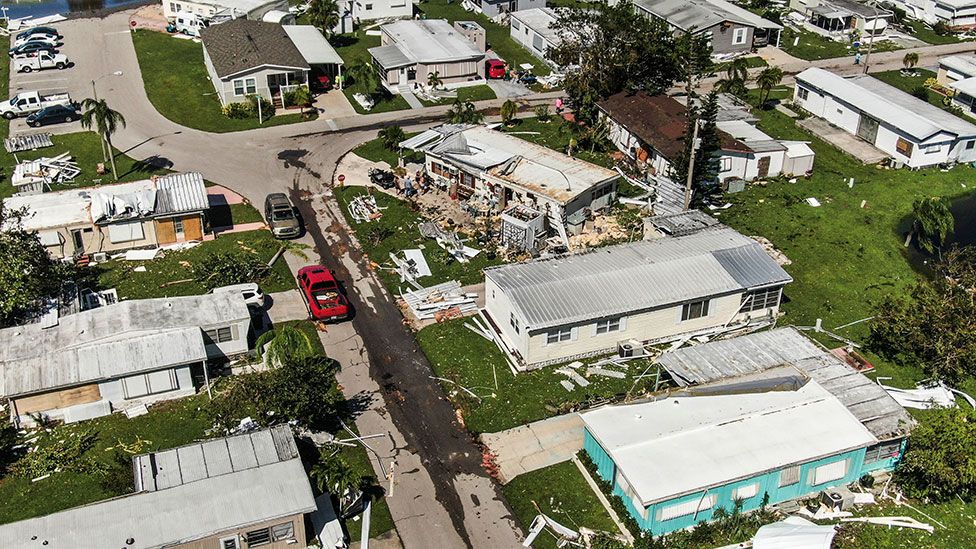

In Naples, firefighters had to wade through chest-high waters to rescue people, including one woman who was stranded in her car.


Storm surges
Storm surges are caused when huge volumes of water are pushed by hurricane-force winds. When they meet land, the water surges inshore at levels far exceeding normal tides. If the coast has wide, shallow continental shelf, like the one along Florida’s Gulf Coast, the surge can be much worse.
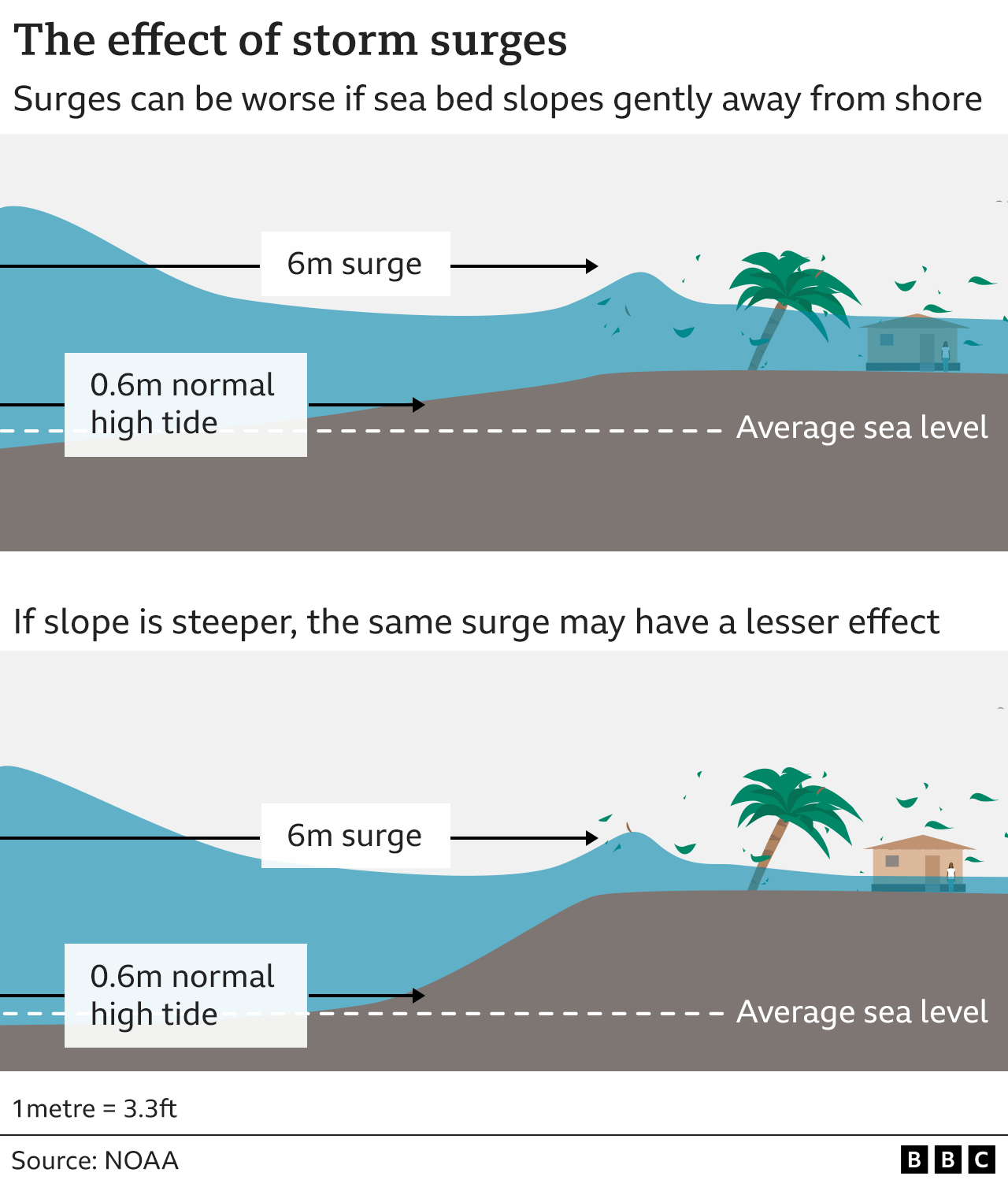

Power out in Cuba
In Cuba – the storm knocked out electricity pylons, flattened homes and caused widespread damage as it crossed the west of the island on Tuesday.
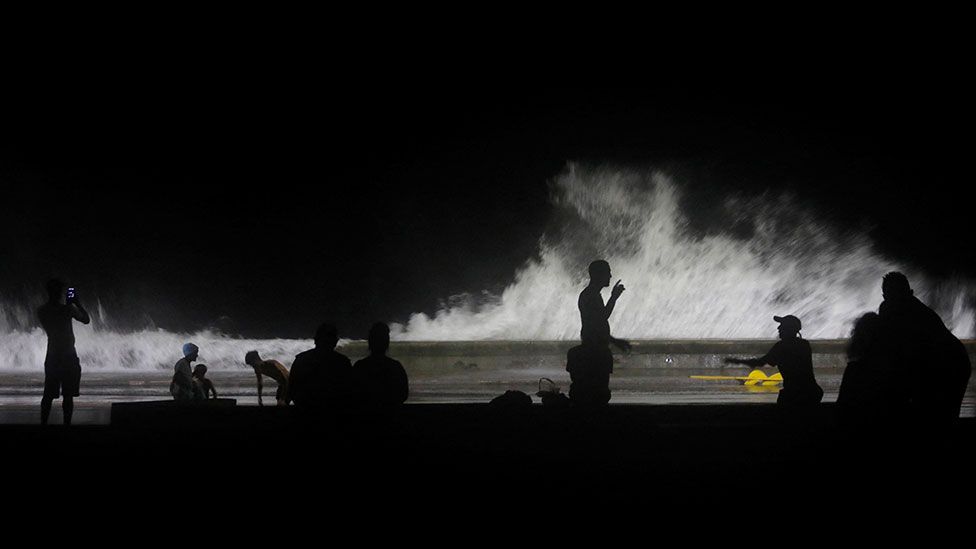

At least three people died, according to state media. Millions were left without power for three days before power started to be restored in some areas.
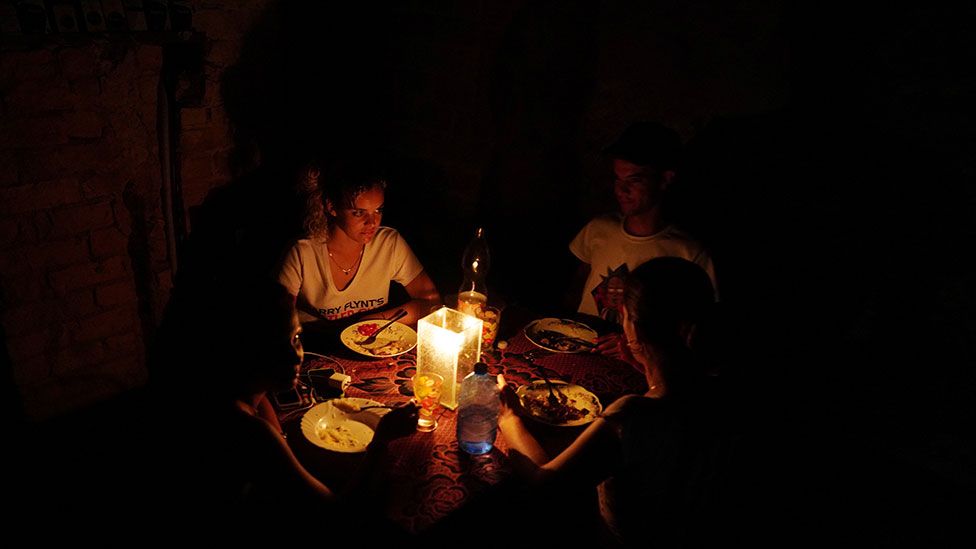

Hurricane season
Florida is no stranger to powerful hurricanes and some of the biggest the US has seen have passed across the state.
In 2004, Hurricane Charley became a Category 4 hurricane just before hitting Florida’s Gulf Coast. Nine died and the storm caused an estimated $6.8 billion in damage, according to the NHC.
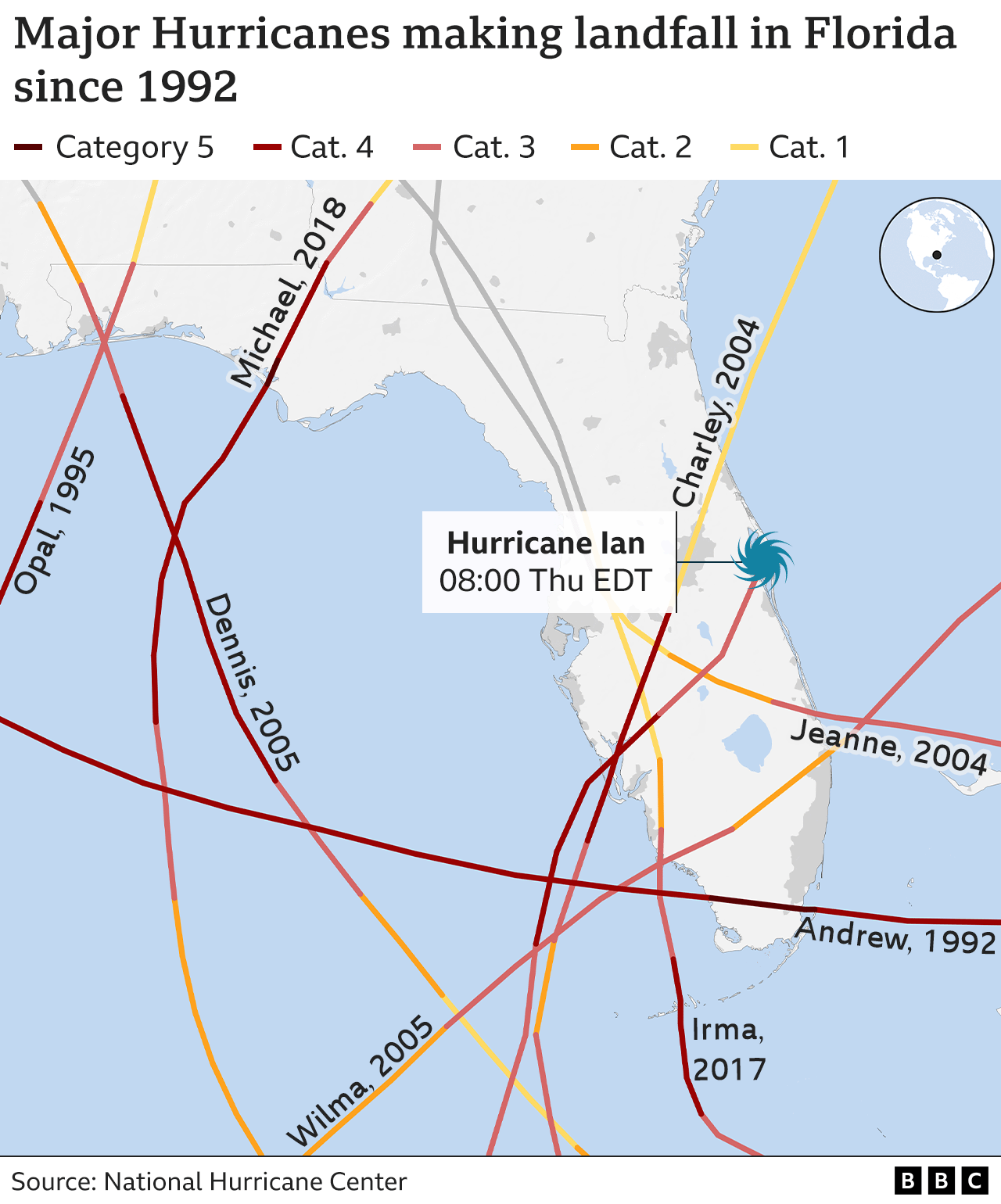

In 2017, Hurricane Irma passed over the Florida Keys as a Category 4 hurricane but at times reached a Category 5, with winds of up to 295km/h (185mph).
Irma left path of a devastation across Caribbean countries and territories before moving up through the US states of Florida, Georgia and South Carolina – an estimated 1.2 million people were affected and about 55 people died.
Hurricane Ian reached Category 4 – when severe damage to property is expected.
For more on this story go to: BBC
See also from BBC:
Hurricane Ian: Florida governor warns of ‘historic’ destruction
Hurricane Ian devastates Fort Myers: ‘The worst storm surge I’ve ever seen’





